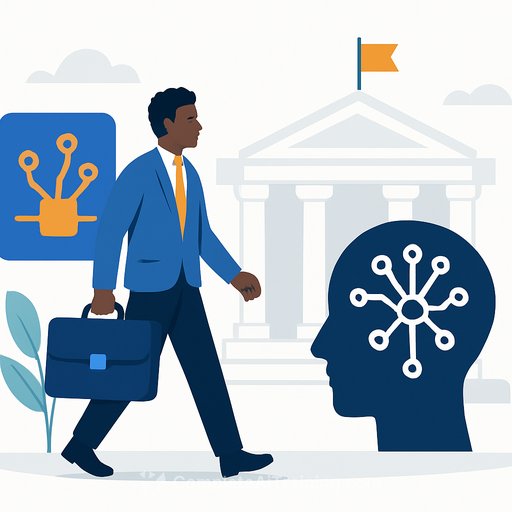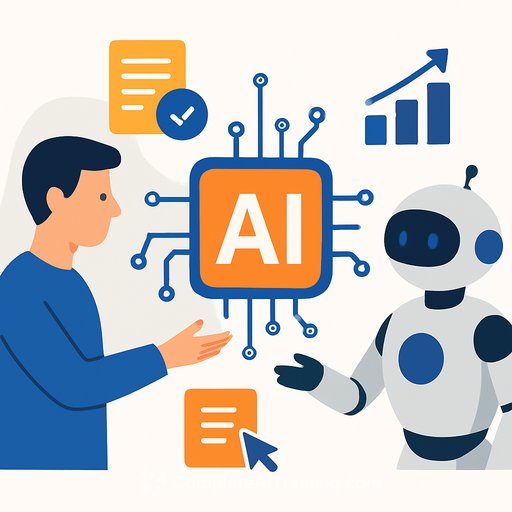Futureproofing: Sovereign AI as a strategic imperative for governments
Sovereign AI has moved from aspiration to priority. As AI integrates into public services and economic infrastructure, having agency over how it is built and run becomes a competitive advantage. This is not isolationism. It is about building trusted, performant, inclusive systems rooted in local languages, rules and norms, while staying connected to global innovation.
What sovereign AI means
Sovereign AI is control over data, infrastructure and the development and deployment of AI technologies. For the public sector, the goals are clear: compliance with laws such as GDPR and the EU AI Act, mitigation of national security risks, and AI that reflects local culture and language. It also means keeping sensitive data within borders and preserving the ability to direct system behavior in line with democratic values.
Enterprises care for similar reasons: ownership of proprietary data, reduced dependency on third parties, and deployment across secure hybrid or on-prem environments. For governments, this creates a path to work with industry under shared guardrails and shared accountability.
EU AI Act compliance is a forcing function here. Building systems that meet these requirements from the start reduces risk, accelerates approvals and improves public trust.
Why open source sits at the center
Open source grants agency. Open weights models like LLaMA, Falcon, Qwen and Mistral let teams inspect, modify and fine-tune systems to local needs. Tooling such as Ray for distributed workloads and vLLM for high-throughput, low-latency inference enables scalable platforms across on-prem, edge clusters and sovereign clouds.
The benefits are practical: transparency into data flows and decision logic, performance tuning for local languages, and cost control. Research from the Linux Foundation notes that 41% of organisations prefer open-source GenAI options while 9% lean proprietary, citing transparency, performance and cost as key drivers. See the Linux Foundation's research library for context: linuxfoundation.org/research.
Models of sovereignty emerging worldwide
Europe pairs strong regulation with open infrastructure and research. Examples include the EU AI Act, the BLOOM language model and Gaia-X, reflecting a philosophy of control, trust and open collaboration.
The US relies on private-sector strength and open-source communities, with state-level investments supporting an innovation-led model. China follows a centralised path supported by public mandates and private innovation, with firms like Alibaba (Qwen) and start-ups such as DeepSeek building end-to-end capabilities suited to domestic needs under strict content governance.
Across Asean and the Middle East, governments are investing in regional capacity. Singapore's SEA-LION and the UAE's Falcon show how open source and cross-border cooperation can deliver multilingual, culturally aware systems.
The three dimensions of digital sovereignty
Technology sovereignty
Independence in designing, building and operating AI systems demands visibility into models and control over the platforms they run on. Heavy reliance on foreign-made accelerators such as GPUs from Nvidia and AMD is a risk. Governments are exploring alternative supply chains, domestic chip programs and open hardware to reduce exposure to export controls and platform dependency. The goal: trusted, locally governed infrastructure for training and inference.
Operational sovereignty
It matters where AI runs and who runs it. Ownership of infrastructure is not enough; operations must be handled by locally trusted teams with the right skills and clearances. That requires workforce programs for AI engineering, MLOps and cybersecurity, and policies that limit reliance on foreign managed services for critical systems. The outcome is continuity and accountability under local control, even during global disruptions.
Data sovereignty
Data is a strategic asset. Governments need systems that comply with privacy, residency and consent rules, and that respect cultural expectations in areas like biometrics, health and finance. Investments in trusted data infrastructure, federated platforms and national datasets help ensure control over who can access, analyse and share information across multi-cloud and cross-border contexts.
The hard problems you must plan for
- Compute constraints: shortages of high-performance accelerators and high training costs.
- Data gaps: limited high-quality, local-language and domain-specific datasets.
- Skills: shortages in AI engineering, MLOps, security and governance.
- Standards: inconsistent technical and ethical baselines reduce interoperability.
Progress requires public investment, private innovation, international cooperation and sustained support for open-source communities.
A 12-18 month action plan for public-sector leaders
- Set mission and guardrails: define outcomes, risk thresholds and oversight. Map requirements to GDPR and the AI Act, and include civil society in reviews.
- Build a reference architecture: adopt an open-source-first stack (model registry, Ray for distributed jobs, vLLM for inference, vector databases, observability and a policy engine).
- Secure compute: assess current capacity, leverage sovereign cloud, and plan procurement for accelerators and energy. Evaluate alternative hardware and create cross-agency capacity-sharing agreements.
- Data program: establish national datasets, enforce residency, use synthetic data where appropriate, and implement cataloging, lineage and access control.
- Talent and operations: upskill civil servants, launch apprenticeships, and form an internal MLOps guild. Document runbooks, SLOs and incident response.
- Governance and assurance: maintain model cards, evaluations and red-teaming. Track audit trails, perform bias and safety testing for local languages, and stand up an independent review board.
- Procurement strategy: require open weights where feasible or escrow, include exit clauses, request SBOMs and supply-chain attestations, and ensure support within your jurisdiction.
- Early use cases: multilingual service chatbots, document summarisation, case triage and fraud detection in controlled environments. Measure ROI and safety from day one.
- Collaboration: participate in regional models, data trusts and benchmark sharing. Contribute fixes upstream to reduce duplicated effort.
Metrics that signal progress
- Time to deploy from pilot to production for priority services.
- Share of AI workloads on sovereign infrastructure.
- Models with documented training data sources and model cards.
- GPU utilisation and cost per 1,000 tokens or predictions.
- Latency and quality for local languages and dialects.
- Incidents detected and resolved within defined SLOs.
- Staff certification and training completion rates.
Final note
Competitiveness and resilience will be set by institutions that build systems that fit their priorities and stakeholders. Sovereign AI grounded in open-source principles enables local innovation, transparency and accountability without sacrificing performance. Treat openness as a lever for control and move now while standards and capabilities solidify.
If capability building is a gap, explore public-sector oriented learning paths and certifications here: Complete AI Training - Courses by Job.
Your membership also unlocks:






